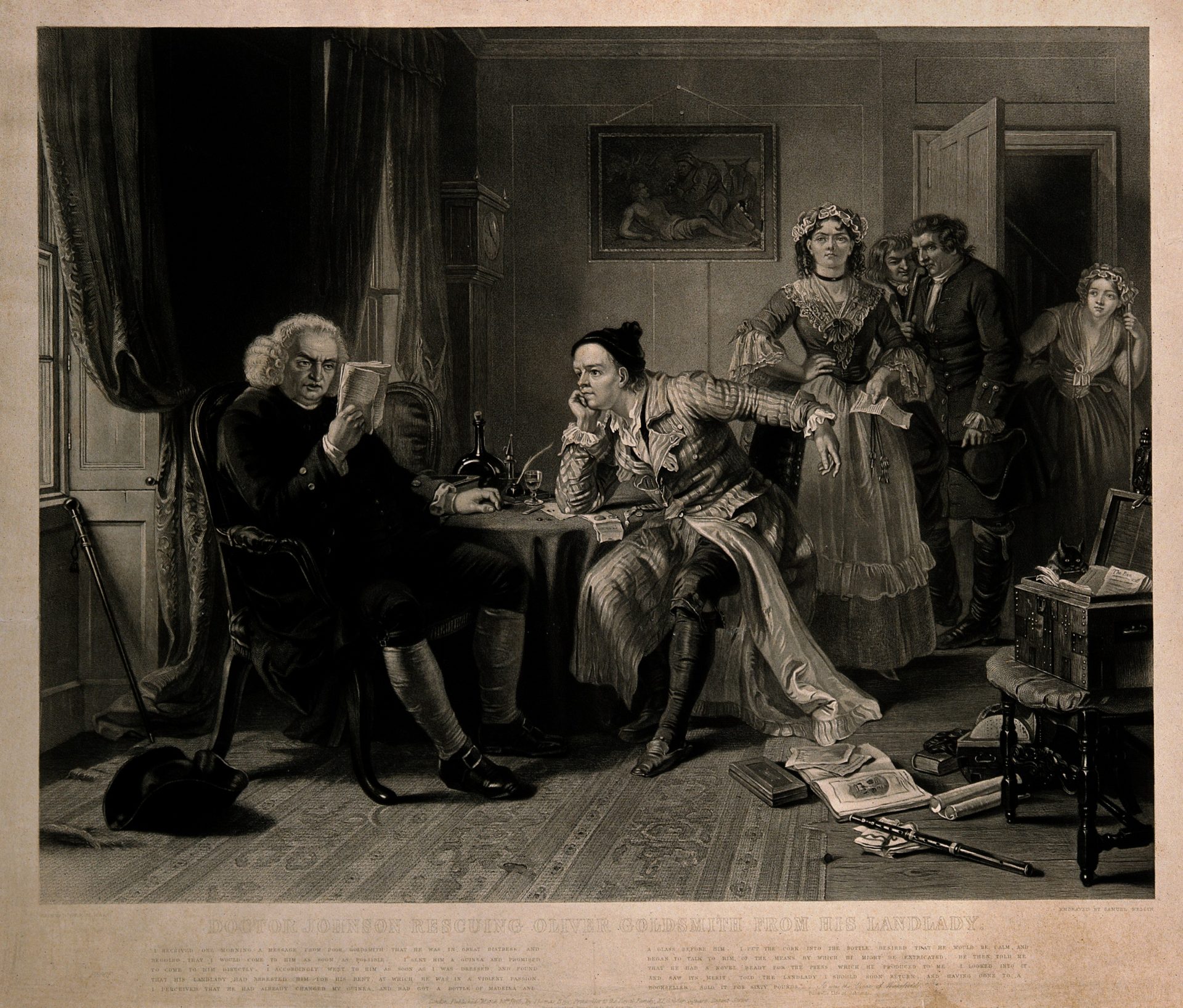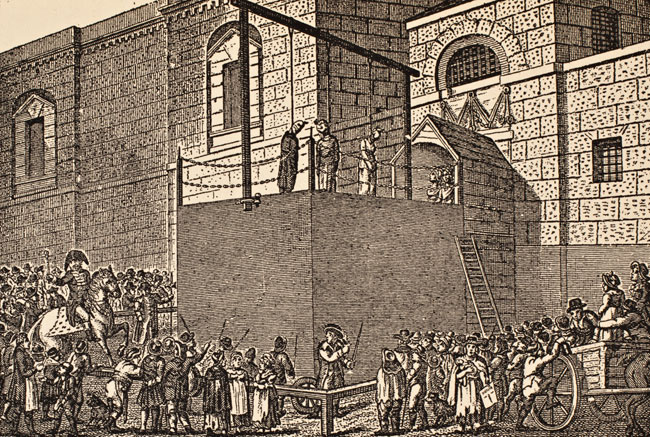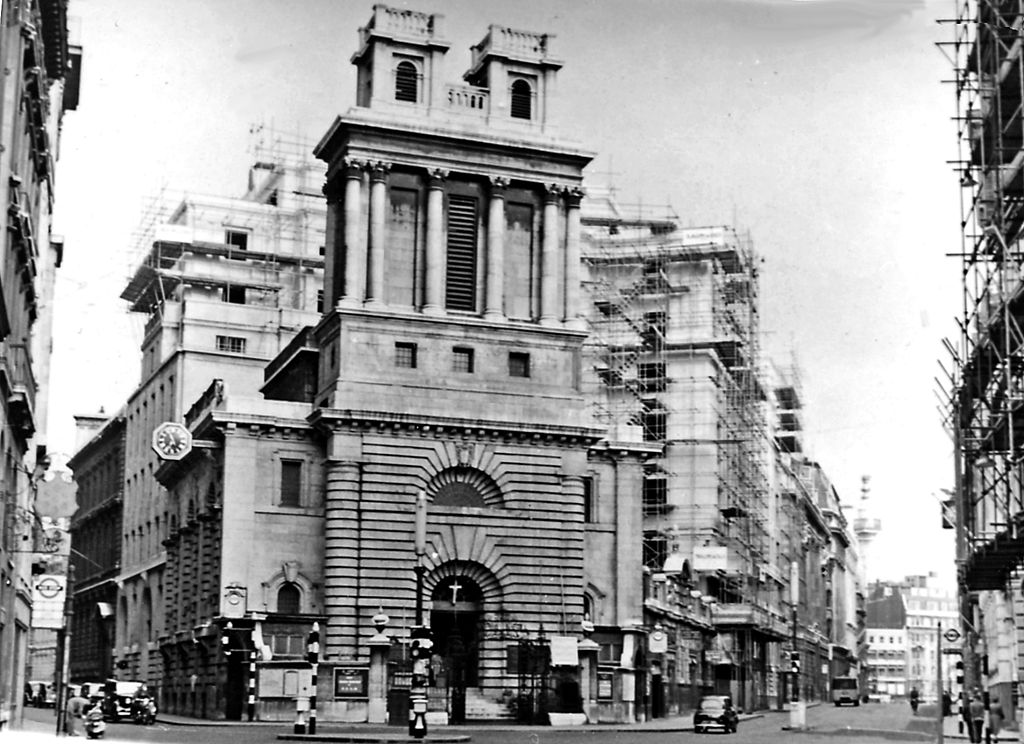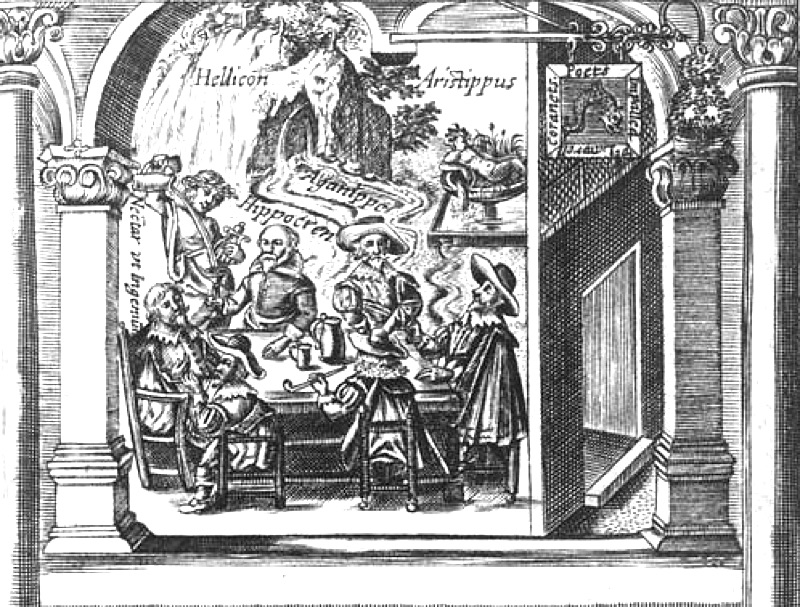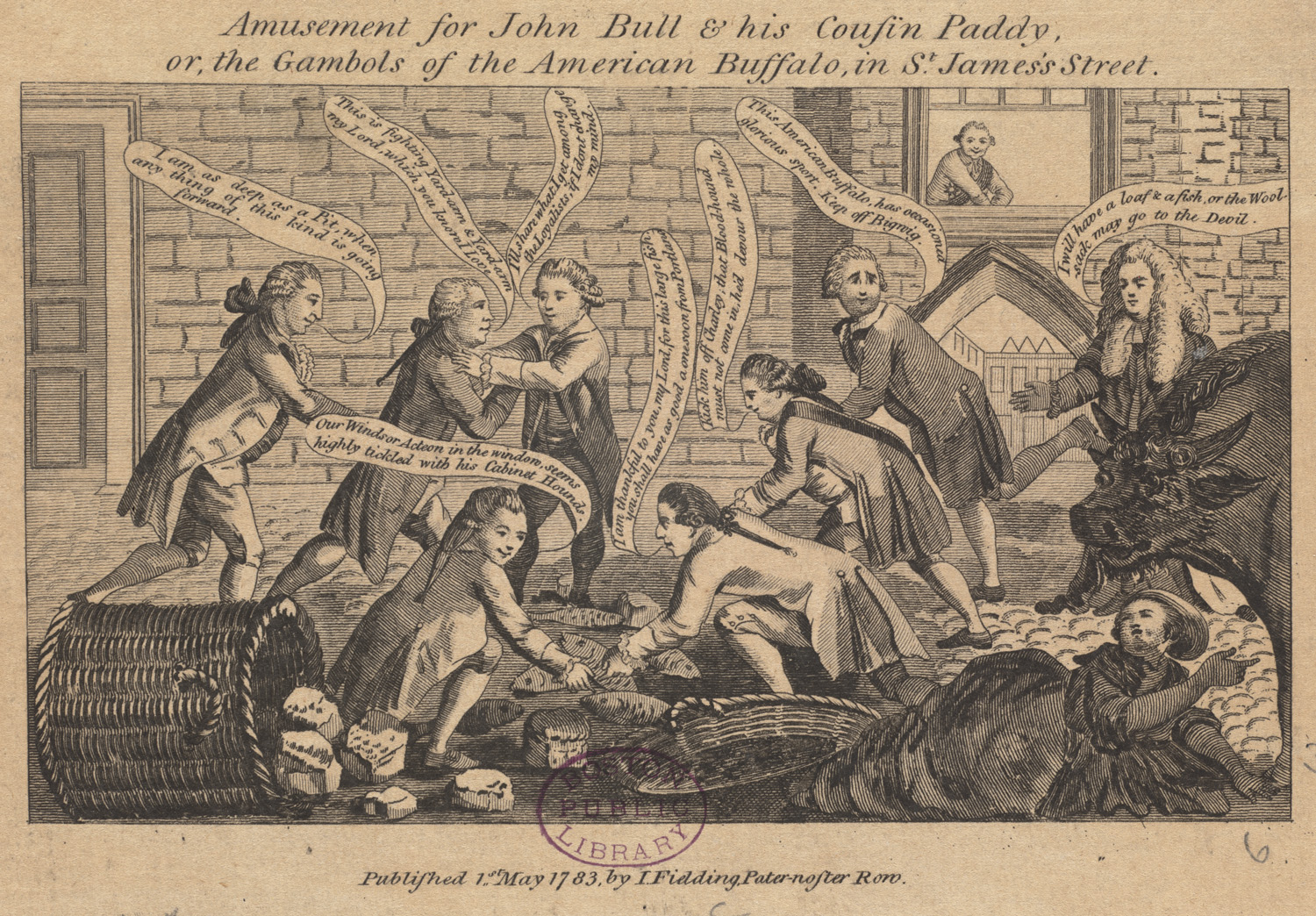Ludgate & Fleet, Literary London, By Pen Lister. October 20, 2017. Categories: Literary London. Tags:london
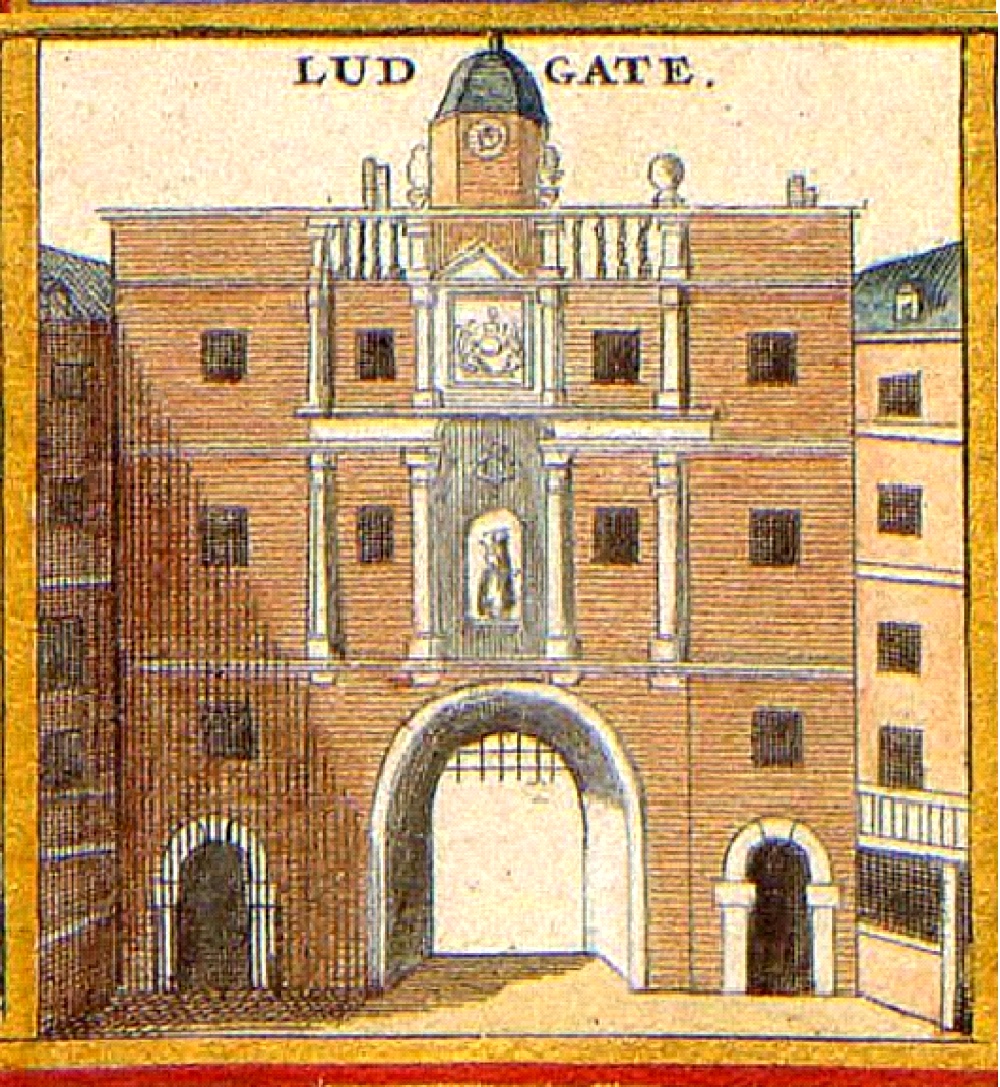
We are now at the western limit of the Roman and Medieval city and we started at the eastern limit at Tower Hill. Ludgate Hill is so named because of the old city gate, Ludgate. Geoffrey of Monmouth’s History of the Kings of Britain (1136) gives a mythical genealogy for the foundation of the city and later for its modern name: ‘Lud surrounded the city with right noble walls, as well as with towers builded with marvellous art, commanding that it should be called Kaerlud, that is, the City of Lud, after his own name.’ Caerlud becomes corrupted to London in time, according to the myth. Ludgate was rebuilt several times, the last time in 1585 when a statue of King Lud was added, and demolished in 1760. The statue of Lud and his sons, and the statue of Elizabeth I which was also on the gate can be seen in the church of St Dunstan’s in the West, further along Fleet Street which we will walk along soon.
The city walls’ western limits were in fact set by the River Fleet, which gives Fleet Street its name and which rises in Hampstead and Highgate to the north. The Fleet flows in a subterranean channel along Farringdon Street in front of you and down into the Thames (see links folder for a guide for where you can still hear the river beneath the street). The Fleet is the largest of the Thames’ tributary rivers but by the early 18 th century it had been used for so many years as a dump for domestic and industrial waste that it was little more than a stinking tidal ditch.
John Gay satirises the decline of the Fleet in his 1716 poem Trivia, a satirical warning about the pleasures and perils of walking in London at the time. Here, the sewer goddess Cloacina rises from the mire and falls in love with a lowly dustman.
“Then leaning o’er the Rails, he musing stood, And view’d below the black Canal of Mud, Where common Sewers a lulling murmur keep, Whose Torrents rush from Holborn’s fatal Steep.
The Goddess rose amid the inmost Round, With wither’d Turnip Tops her Temples crown’d; Low reach’d her dripping Tresses, lank, and black As the smooth Jet, or glossy Raven’s back; Around her Waste a circling Eel was twin’d, Which bound her Robe that hung in Rags behind.”
Aspects of this place to think about
What are the markers of the modern city limits? How far does the modern city extend? We have walked from city gate and city walls across the paths of two rivers that bound the city in ancient times. Rivers and fortifications and city gates are powerful barriers. What are the zones and structures of inclusion and exclusion today?
- The natural environment of the city – rivers, water channels, high and low ground
- Early modern myths about the city’s history and their persistence in name and place
- The city’s growth beyond the walls in the 17 th and 18 th centuries
- How would you update John Gay’s poem to warn about the moral, physical and environmental dangers of the city today? Road rage, moped thieves, exhaust pollution, fatbergs?
Content available at the location, about the place or area
Investigate all the other icons on the Aurasma augmented trigger, use the icons guide to find out what is available.
![]()
This guide is accessed via the layers icon in the bottom left of any trigger using a similar icon to this one:

Triggering the Augmented Reality
Remember to focus on the trigger image using the Aurasma camera, centering the image to be as similar to what you see on the map as you can. The Aurasma camera provides small watermarks at each corner of its camera view to help guide your focus.
Ludgate & Fleet Resources
By Pen Lister October 20, 2017 Categories: Literary London
St Bride’s, Fleet Street, the journalists’ church
“… There had been a site of Christian worship alongside the Fleet River and close to the Lud Gate, now known as Ludgate Circus, in the heart of the ancient City of London, for about 1,000 years.” http://www.stbrides.com/history/chapter-3-1500-1665.html#top
John Gay’s Trivia (1716)
… In which the sewer goddess Cloacina rises out of the Fleet ditch https://www.theguardian.com/books/booksblog/2008/dec/08/poem-week-trivia-gay
Where to see the lost River Fleet
“The Fleet, London’s best known lost river, slices down from Hampstead Heath to the Thames at Blackfriars, enclosed entirely in Victorian sewer tunnels… Well almost” https://londonist.com/2016/09/where-to-see-and-hear-the-hidden-river-fleet
The Daily Courant - Britain’s first newspaper, and Elizabeth Mallet
Elizabeth Mallet, British journalist and publisher from London who published Britains first daily newspaper. http://www.tyci.org.uk/wordpress/womens-history-elizabeth-mallet/
The Daily Courant, March 11 th 1702
Englands first national daily. Great images and background here https://thestreetandthecityul.wordpress.com/2016/03/11/march-11-1702-first-issue-of-the-daily-courant-englands-first-national-daily-newspaper/
Banging Out - Fleet Street Remembered
A documentary film based on oral history interviews with former printers and journalists. https://youtu.be/IvC9Hs39Wts
